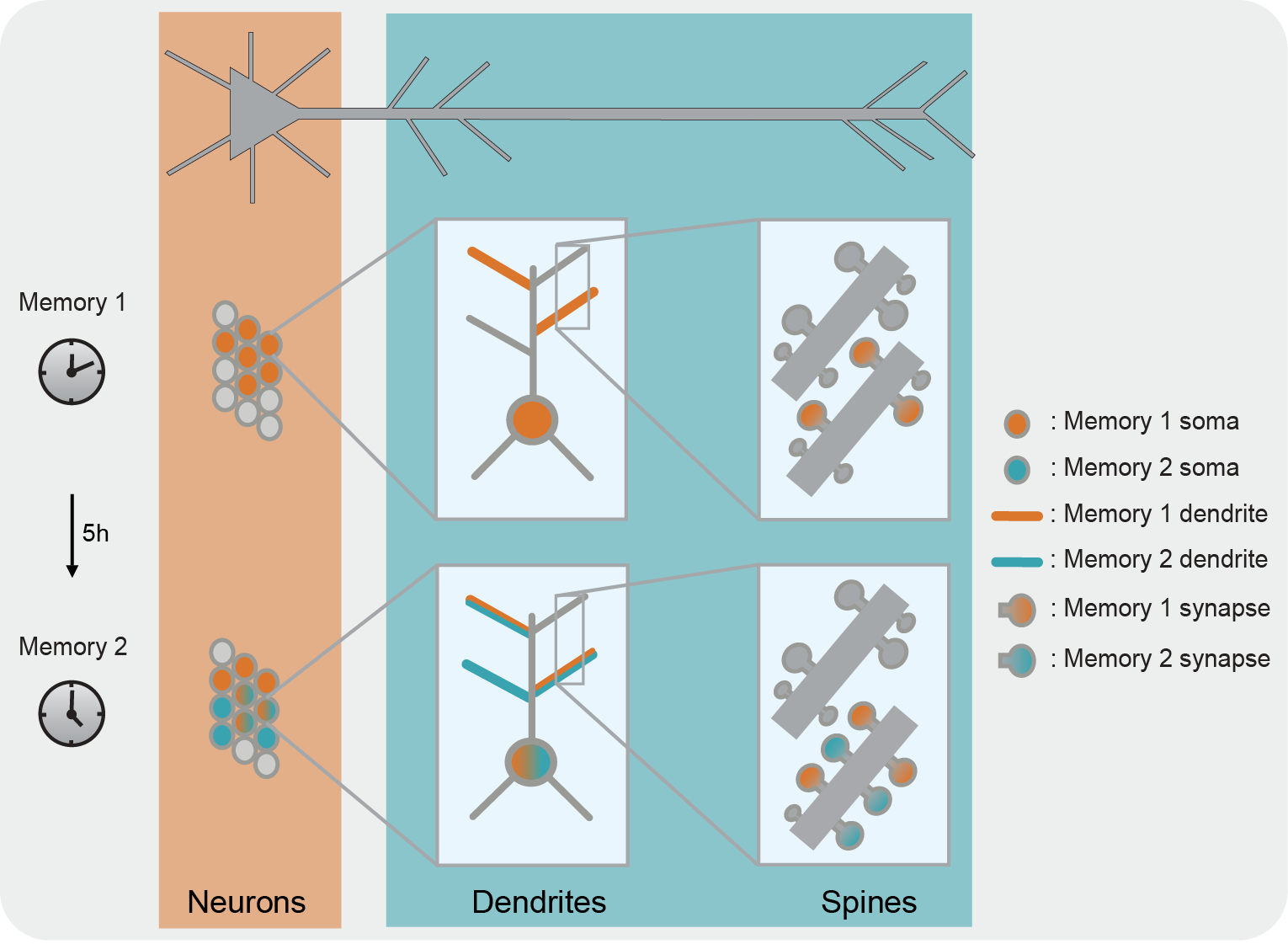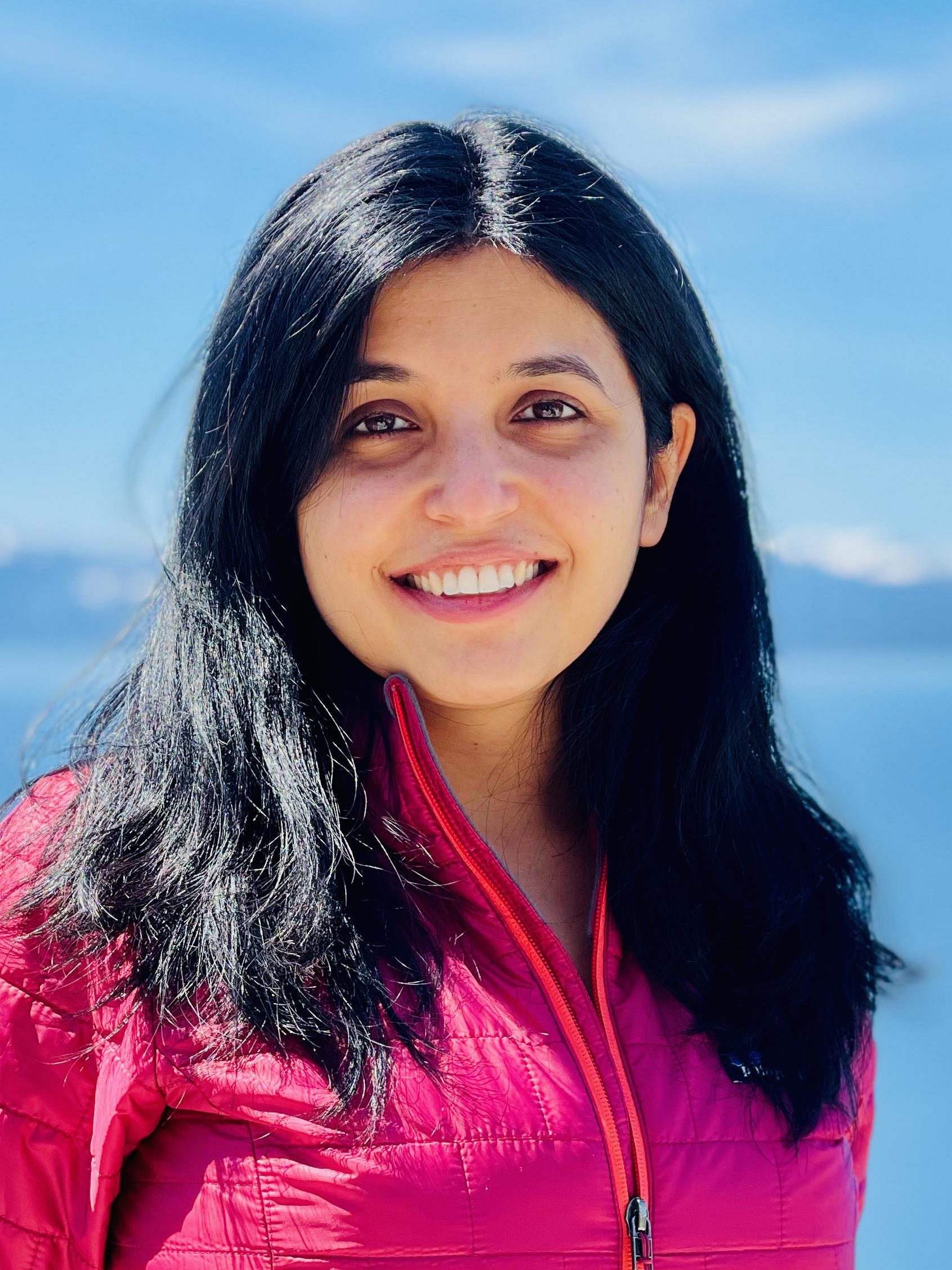
Memory linking in dendritic branches
An interview with Dr Megha Sehgal, University of California, Los Angeles, conducted by Hyewon Kim
If a dog on Hampstead Heath barks as soon as a bike whizzes past you, you would naturally associate these two events by linking the memories. What happens in our brain such that these disparate events get linked in memory? In the third Emerging Neuroscientists Seminar Series talk of 2022/23, Dr Megha Sehgal shared her work exploring dendritic mechanisms of memory linking over time. In this Q&A, she encourages future ENSS applicants and explains how her work furthers the understanding of learning and memory at the sub-neuronal level.
What prompted you to apply for the SWC Emerging Neuroscientists Seminar Series (ENSS)?
I learned about ENSS from a former speaker, Dr Dhananjay Bambah-Mukku. I was talking to him about my work, and he encouraged me to apply. He had a great time at SWC during his visit and really enjoyed talking with SWC researchers. This was true for me as well, so I am glad he encouraged me!
How useful has the experience been?
It’s been extremely useful. SWC appears to be a melting pot for researchers from all over Europe. Meeting this wide group of people from all over Europe has been extremely useful, especially since I am coming from the US. I have learned a lot about science and research in the UK and at UCL/SWC during my visit. On a scientific level, there is a lot of overlap with my work and interests here, but there are also many new perspectives. For example, SWC scientists are looking at the retrosplenial cortex but with very different tools and questions. This new perspective is very helpful in broadening your science and field of view.
What advice would you give to those considering applying to ENSS 2023?
This is more of a note of encouragement. If I remember correctly, the ENSS process was slightly different from other similar applications. For example, the materials are anonymous and for the first time, I had to think more broadly about my contributions to science. This was very useful because I could take this line of thinking and use it in my job application materials.
I would say there is an investment of time if you want to do your applications correctly, but it’s also something that is transferrable because it helped me be clear on what I was bringing to a new department when I applied for jobs. I have opened my ENSS application a few times since then to see how I phrased things.
What first sparked your interest in memory linking and dendritic mechanisms?
I was broadly interested in the fundamental question of how we learn new information and how memories are formed. One of the older ideas is the idea of ‘grandmother neurons’, i.e., a few neurons store the memory of your grandmother. These neurons die and you will forget your grandmother.
We now know that this is unlikely. Around the time I was really getting into neuroscience, it was discovered that there exists a group of cells that encode a memory. And what allows them to encode a memory is sometimes transient levels of transcription factors like CREB (cAMP Response Element-Binding Protein) that might be changing based on circadian rhythms, excitability, etc.
What I discovered in grad school was that learning changes intrinsic excitability only in a small subset of neurons. The ion channels that seemed to underlie these changes are located on the dendritic branches. If this is the case, and dendrites are plastic in a branch-specific way as I discussed in my talk, what does that mean for learning and memory? Are there branch-specific mechanisms behind memory?
This fascinated me. While seminal work clearly and comprehensively shows that dendrites are plastic, they allow single neurons to perform computations that are otherwise not possible, there are still a lot of open questions. All neural network mechanisms – how models of the brain work and how non-neuroscientists think about the brain – largely rely on soma-only components. The dendritic mechanisms just seemed to be a completely open question!
Had much been known about the role dendrites play in how memories are integrated in the brain across time?
Nothing! We knew from ex vivo studies – slices, brain cultures, or neuron cultures – the kinds of changes that neurons experience when you patch from them or stimulate a particular synapse by uncaging some glutamate. That’s mostly the kind of dendritic work that’s been done. This is very important and has told us fundamental things about how the brain and neurons works.
But it didn’t really tell us how the experience in a cell culture or in a slice translates to the experience of an animal – let alone how memories are formed and integrated! The gap between mechanistic work and what it specifically means for animal behaviour or learning was a wide chasm that no one had tried to bridge. That was what was so interesting to me about this project. I got to do both behavioural studies and relate them to structural studies in vivo.
What experimental techniques did you use to bridge this chasm?
In order to look at dendritic function in learning and memory, we needed to do a few different things. We needed access to techniques, which allow us to longitudinally image not only the somas as animals make various memories, but also their dendrites and specifically in my case the spine changes on these dendritic branches.
We had to work with three different longitudinal imaging technologies and use three different microscopes at each point. One was a small microscope the animal could carry on its head, which allows the animal to behave freely. With a two-photon microscope, you can look at dendrites and spines at higher resolution, but that means you have to adapt the animal’s behaviour to work in a head-fixed setting. And because my main interest is in what dendritic function does in behaviour, we combined all of this with really complicated but equally ethologically-relevant behavioural paradigms called memory linking. Animals not only make one memory, but they also link it to other recently encoded memories. I think there were challenges involved and things we had to develop both at the behavioural and imaging standpoint as we longitudinally carried out these experiments.
What have been your key findings so far?
One of my key findings is that not only are there neuronal allocation mechanisms, but what is driving these neuronal allocation mechanisms is actually the presence of localised dendritic mechanisms. Within dendritic branches, there are local mechanisms or plasticity processes that allow future memories to be preferentially encoded in these dendrites. Previously, we had not known anything about the role of these branch-specific plasticity mechanisms in memory formation or organisation.

This process is something we can manipulate using one of the tools that I developed. You can reactivate these tagged dendritic branches and just by manipulating dendritic overlap in this manner, you can link memories together. This is the first time we know that dendritic mechanisms localised with some branches play any role in animal behaviour.
What are the main implications of your research?
There are two ideas I want to emphasise. The first is that on a broad level, plasticity that is highly localised to dendritic branches affects future plasticity on these dendritic branches. In the context of my current work, this affects the linking of two memories.
We have known that memory formation results from synaptic plasticity on a small subset of synapses on the neuron. I am saying that the dendritic branches containing these spines undergo plasticity: localised dendritic plasticity. These dendritic branches, at least for a time, are plastic and allow the updating of memories, maybe in the form of linking another new memory. We are just starting to look at how dendritic mechanisms influence learning and memory. And hopefully with some of the work that I and others have done, we now have the tools to look at it in a very causally and mechanistically detailed manner.
What do our findings mean for a broader neuroscientific understanding of memory? We link memories in a broad variety of dimensions – if they happened at the same time, space, or because they have some similarities. There are no limits to how humans link memories. But my data indicate that you can only link memories in a brain region if they impinge on the same dendritic branches. I think this is what sets the limit on brain regions necessary for linking certain kinds of information. Unless the two modalities you’re trying to link impinge on the same dendritic branches, that brain region might not be able to encode the link between those two memories. Wherever this might be happening would be the brain region that encodes that link.
What are some of the next pieces of the puzzle you’re excited to work on?
So many! We’ve discovered a really high level phenomenon and we don’t really know what the underlying mechanisms of this form of plasticity are, as a lot of this work had been done ex vivo in brain slices or in culture. It would be interesting to discover these mechanisms because the timescales we are looking at are slightly different than what has been studied so far in learning and memory studies. What are, not only, the intrinsic mechanisms, but also the circuit-level mechanisms that bring about these dendritic plasticity changes?
In addition, we just started developing these tools and methodologies to be able to look at dendritic function in learning and memory. I think there’s a lot more that we can do to fine-tune these experiments and to do them in a way that is more conclusive in identifying a dendritic branch, for example. We do these experiments using a very broad definition of branch-specific or localised plasticity, so it would be really useful to have better tools, technologies, and model systems to more confidently look at localised dendritic plasticity. That is something that I am excited to work towards. For example, I use a tool to label dendritic activity and manipulate it. That was the first iteration of the tool and there is much more we can do to modify and fine-tune it.

About Megha Sehgal
Megha Sehgal is a postdoctoral scholar in Alcino Silva's lab at UCLA where she has been working on localised dendritic plasticity and its role in learning and memory. Megha finished her undergraduate degree from Delhi University and then went on to do a short research stint at National Center for Biological Sciences, India where she first became interested in Neuroscience. She then joined University of Wisconsin-Milwaukee as a grad student in Jim Moyer’s lab where she studied learning and aging-related changes in fear learning circuit. Relevant to her talk today as a graduate student, she demonstrated that fear learning changes intrinsic excitability in a small subset of neurons in amygdala. To explore the role of intrinsic plasticity further she joined Alcino Silva’a lab as postdoc. She will be talking to her about her postdoctoral work at SWC but in addition to this work Megha has been very involved in open-source UCLA Miniscope development.


